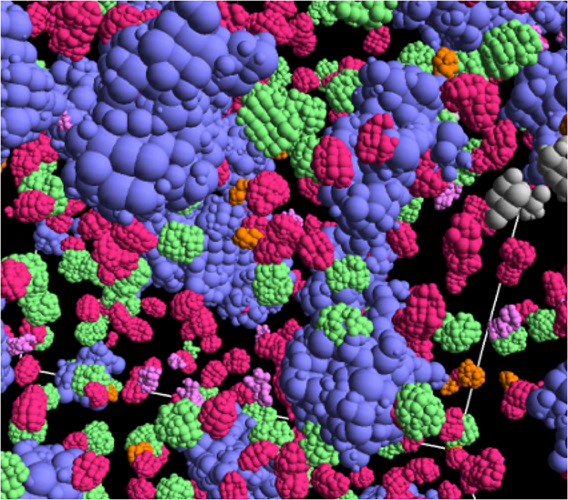

Main navigation | Main content
07/28/2011
Recent research from the research group of Professor
Graduate students Peng Zhang and Michael Mazack were each awarded a Best Poster Award from the 2011 Congress of the World Association of Theoretical and Computational Chemists (WATOC).
Zhang and Mazack's posters were selected from a total of 649 presentations. Zhang's poster features a new charge model for molecular simulations and drug screening applications. Mazack's poster describes the design and implementation of a novel software package, MACROSHAKER, for analytical coarse-grained simulations of macromolecular interactions in biological cells. In addition to certificates, each also received a 200-euro cash prize.
Zhang, a first-year graduate student in the Department of Chemistry, and Mazack, a second-year graduate student in the Scientific Computation Graduate Program, are both in Professor Jiali Gao's group from the Department of Chemistry and the Digital Technology Center.
Nearly 1,400 delegates attended the largest triennial computational chemistry conference in the world, which was held in Santiago de Compostela, Spain, from July 17 to July 22, 2011.
Partial atomic charges are extremely useful for a variety of conceptual and computational applications, and there are many approaches for estimating partial charges. Zhang developed a new method to derive accurate partial atomic charges that preserve the total molecular dipole moment and the local atomic contributions determined by an electronic structural theory. Consequently, these charges can be consistently utilized with quantum mechanical (QM) calculations, including combined quantum mechanical and molecular mechanical (QM/MM) methods and the explicit polarization (X-Pol) quantum-mechanical force field. The new charge method also introduces a feature to treat molecular polarization, and it is called the dipole preserving and polarization consistent (DPPC) method. The DPPC model is particularly useful for large molecular systems both using ab initio and semiempirical Hamiltonians that yield excellent molecular dipoles. The method can be used to compute solvation free energies and applied to the fast screening of millions of compounds in drug design. Browse Zhang's poster.
The vast majority of current computational and experimental studies of biomacromolecules are carried out in vitro. However, such an ideal situation is in sharp contrast to processes taking place in vivo, where the cytoplasm is crowded with proteins, nucleic acids, ribosomes, polysaccharies, and small solutes. A direct consequence of crowding effects is that macromolecular transport and diffusional mobility are strongly influenced by the environment and the size of the particles that they interact with. Mazack developed a novel computational model for analytical coarse-graining (ACG) of macromolecular particles using spherical harmonic functions. Read more about this work. Mazack has developed and implemented a corresponding simulation software suite called MACROSHAKER, which can be used to model cellular biochemical and biophysical processes in vivo. The program provides a graphics-user interface (GUI) for point-and-click authoring of simulations, a web-based job feature for scheduling, monitoring and execution, and interactively visualizing dynamic and saved trajectories in real time with a fly-through mode. The program allows for Brownian dynamics simulations using the Ermak and McCammon scheme with rigid body dynamics and quaternions for rotational motions.
The Journal of Computational Chemistry article on the DPPC charge model is entitled “Dipole Preserving and Polarization Consistent Charges.” The novel analytical coarse graining (ACG) method, which is entitled “Internal Dynamics of an Analytically Coarse-Grained Protein,” can be found at the Journal of Chemical Theory and Computation.
